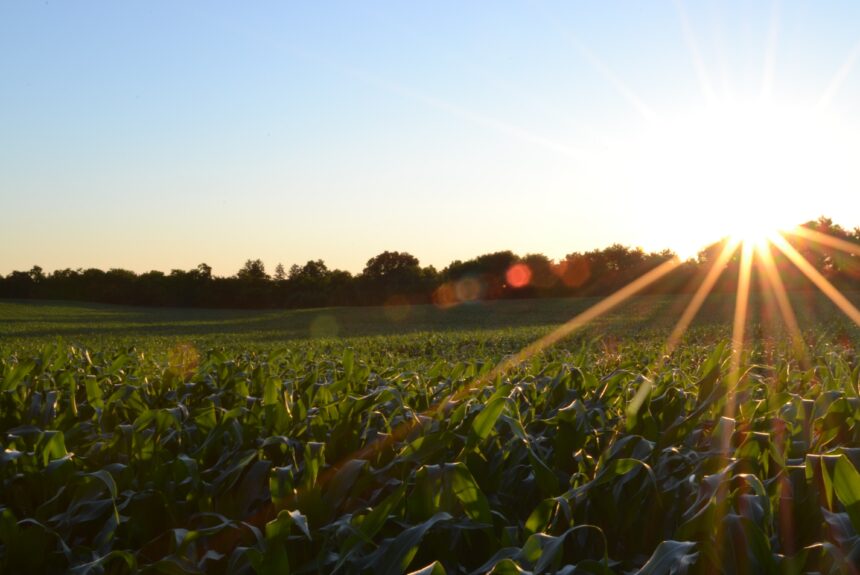Scientists are increasingly identifying uncoventianal materials that can be turned into bio-plastics. Sawdust, sugar, sewage, and agricultural and industrial waste are just a few of the potential options that could transform the plastic industry. The search for profitable, easy to produce solutions has become increasingly important as the world attempts to cope with existing mountains of plastic while reducing new production.
>>>READ: Recycling Breakthroughs are Addressing the Plastic Pollution Problem
Plastics are undoubtedly essential to modern life as they are lightweight, waterproof and extremely durable materials that can be used in everything from industrial machines to storing food in kitchens. To rectify plastic’s negative environmental impacts, many companies are exploring ways of recycling and breaking down the components of existing plastics in order to create a circular economy.
Others are focusing on identifying environmentally-friendly raw materials that could be used to create bio-based plastics that will simply compost down. Bioplastics made from corn, sugar and vegetable oils are already widely used in many formats such as packaging and medical applications such as thread for sewing up wounds. Most recently, bioplastics have even been used to create vinyl records, replacing the need to use environmentally damaging plastics like Polyvinyl Chloride. The increased attention being paid to the potential scope for bioplastics has resulted in some very innovative and unusual solutions appearing.
Sewage and wastewater are perhaps the most unlikely materials to show promise. Sludge from sewage and industrial wastewater plants contains bacteria that when fermented, convert fatty acids into PHA (polyhydroxyalkanoates) a fully biodegradable bioplastic. Research is underway at the Centre of Expertise Biobased Economy, Avans Hogeschool in The Netherlands to identify ways of improving the efficiency and stabilisation of this PHA production process. Vivianne Runa of the University of Bath has discovered that PHA-based bioplastics offer considerable potential for use, particularly for medical and pharmaceutical purposes.
Wood waste is another ingredient that is attracting attention. Engineered spider silk has been combined with wood waste to create a slurry that can be turned into bioplastic films ideal for bags and packaging. When no longer needed, the films can be buried in the soil where they disintegrate naturally within three months. Alternatively, they can be easily recycled by being mixed with water to return to a cellulose-lignin slurry that can then be used to create more bioplastic film.
Finnish company Sulapac has been producing sawdust-based plastics of varying qualities for almost a decade. Sulapac plastics are used as packaging for everything from cosmetics to foodstuffs and jewellery, while a slightly different variation –Sulapac Universal – is used for all forms of rigid products including rocket cones and straws.
>>>READ: Can this innovative clean tech company close the gap on plastic waste?
Not all the solutions are coming from professional researchers and scientists. In Oman, a 14 year old schoolgirl Neeam al Harrasi recently filed a patent for a bioplastic based on rice water and fish scales that she devised as part of a school project. Her brief was to use only products that were available locally and were sustainable. Neeam’s first version was too weak, but she quickly improved it into a more durable material suitable for hard, rigid products. She has since filed a patent for her bioplastic with the Intellectual Property Department and hopes that her invention can be used worldwide.
At Biotic Labs, microalgae are being used to create fully biodegradable PHBV polymer-based plastics. Since such materials are quick to grow and easily harvested, they provide no competition for land use. Aldi Goldman, CEO and co-founder of Biotic believes that abandoned oil rigs located in the oceans as being ideal places to create bio-refineries to make the new materials. Using such locations would return unwanted facilities into valuable use, without further damaging the environment.
It is not just sustainability that is making bio-based plastics such an interesting proposition. Researchers are finding that biodegradable plastics can possess ‘smart’ features that are also anti-microbial, providing valuable health and safety features. Scientists from Harvard and Nanyang Technological University in Singapore have devised waterproof food packaging made from biomaterials such as corn proteins, citric acid and thyme oil. The resultant material kills harmful food microbes such as bacteria causing E.Coli and Listeria while extending the shelf life of fresh fruit by two or three days. One experiment carried out by the researchers enabled strawberries to stay fresh for seven days before developing mould, whereas conventional petrochemical-based plastics only kept the strawberries fresh for four days.
Angela Youngman is a long established freelance journalist and author based in the UK specialising in business, sustainability, travel, tourism, leisure, food & drink.
The views and opinions expressed are those of the author’s and do not necessarily reflect the official policy or position of C3.
